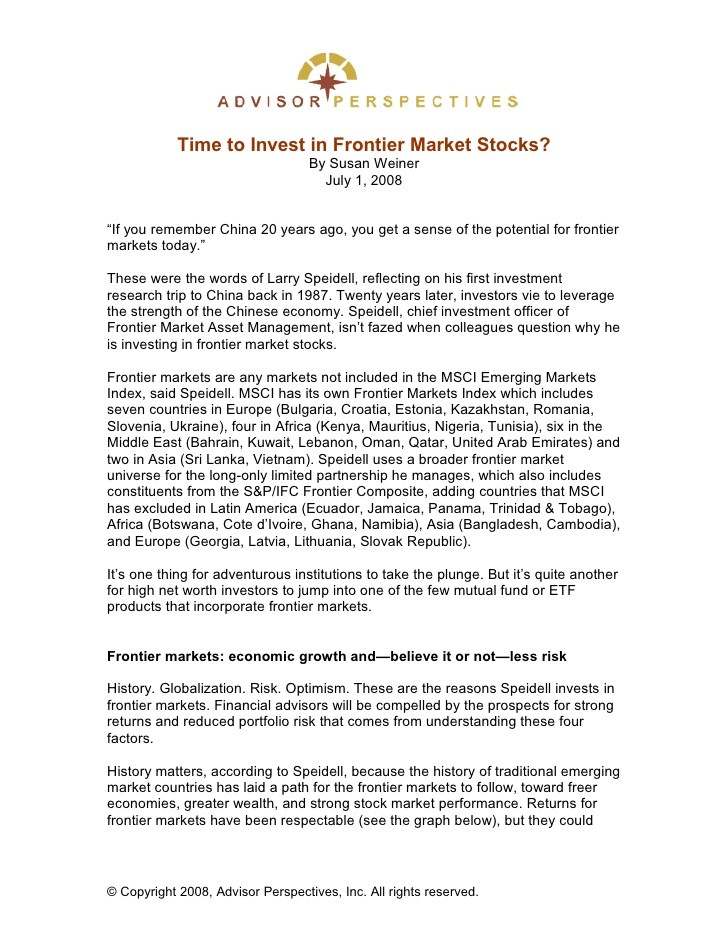How to invest in frontier markets
Post on: 16 Март, 2015 No Comment

Your e-mail has been sent.
For investors with higher levels of risk tolerance, investing in undeveloped markets such as those represented in MSCI’s frontier emerging markets index can pay off in terms of return and portfolio diversification.
Companies in frontier markets tend to be smaller than those in more developed countries. Markets in frontier countries tend to be less liquid than those of more developed nations. That can be good and bad for investors. Low trading volume and sparse buyers could leave investors holding the bag in the event of downturns. The flipside is that frontier markets aren’t roiled by huge influxes of capital from foreign investors and then turned upside down again as it washes out, according to a recent study by LR Capital and reported by the Wall Street Journal.
Small cap country
Investors should consider frontier market countries in the same way they think about small cap stocks, says Adam Kutas, CFA, portfolio manager of Fidelity Emerging Europe, Middle East and Africa Fund ( FEMEX ) and Fidelity Latin America Fund ( FLATX ).
The way I think of it, developed countries are like large cap companies: diversified, big, but slower growth and stable. Emerging markets is more mid cap. They are growing fast but not as much as they used to, while frontier is more like small cap: very early stage in development with higher returns, faster growth potential and the volatility can be high, he says.
Bumpy ride?
The research chronicled by the Journal indicates that frontier markets have shown a lower level of volatility than developed markets and emerging markets over the past (tumultuous) decade. That doesn’t mean that investors can expect smooth sailing in developing markets forever.
There is volatility. People have to remember that the earnings profile, the GDP profile of the countries, can be up and down, Kutas says.
Plus the group is incredibly broad, spanning super rich countries such as Qatar (technically it was bumped up to the emerging markets classification by index provider MSCI this month) to financially poor countries such as Nigeria.
Within frontier you have countries that are what people think of: Nigeria or Kenya — very poor and very poor infrastructure for equity markets, but high growth. But also Kuwait and Qatar, very rich countries with developing market structures, says Kutas.
You get different countries in different stages, he says.
Diversification benefits
A study published last summer in the Journal of Portfolio Management examined whether or not individual investors would benefit from exposure to frontier markets. The study concluded that holding ETFs that represent frontier regions offer the most risk reduction to international portfolios. A broad frontier market ETF also offered diversification, thanks to the low correlation with stocks in the more developed countries.
The lack of liquidity and inherent political and country risks of undeveloped markets has kept many investors and analysts out of frontier countries, but adventurous investors could be changing that.














